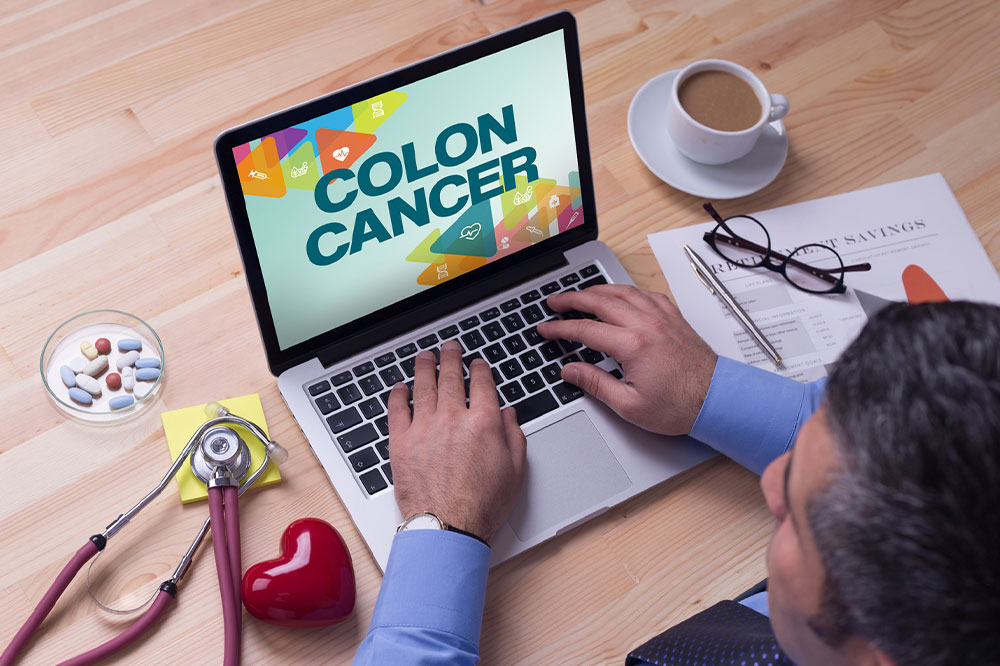9 warning signs of colon cancer

Colon cancer, also known as colorectal cancer, originates in the colon (large intestine), the final part of the digestive system. But in some cases, it can also begin in the rectum. In most cases, this condition affects older adults. However, one can develop it at any age. Fortunately, if diagnosed in the early stages, colon cancer can be managed and treated fully in some cases. Hence, knowing its warning signs is essential.
Warning signs of colon cancer
Here are a few warning signs that one should know:
- Persistent changes in bowel habits
Most symptoms of colon cancer remain unnoticed until the later stages. This happens because most signs of this condition resemble those of other gastrointestinal diseases. This also includes sudden changes in bowel habits, such as constipation or diarrhea.Besides this, one can also look out for alterations such as changes in consistency or narrowing of the stool. If any of these are noticed, one must note the duration of these symptoms. One must seek immediate medical attention if these last longer than a few days.
-
Blood in stool
Usually, blood can appear in the stool due to irritated polyps, benign growths that may become cancerous over time.So, while the color of the stool can change depending on the foods eaten, one must be wary of any sign of blood while passing stool. One must also pay attention to the color of the stool. If it resembles a bright reddish color accompanied by blood on the toilet paper or in the toilet, then one must consult a healthcare professional at the earliest.
-
Pain in the abdomen
Typically, changes in bowel habits can be accompanied by other warning signs of colon cancer, such as abdominal pain or discomfort. Although many health conditions can cause the development of pain or gas, this discomfort can sometimes manifest in the form of cramping or persistent pain with bloating in the area.In such cases, one must watch out for the presence of this discomfort, especially after bowel movements. Then, if it’s accompanied by pelvic pain, it’s time to consult a doctor.
-
Vomiting and nausea
In cases where the cancer begins to spread, it can lead to complications like obstruction of bowel movements. This, in turn, triggers other warning signs of colon cancer, like vomiting and nausea.But, while watching for this symptom, one must remember that in the case of colon cancer, chronic constipation can be held responsible for developing these signs. So, if one has been vomiting for more than 24 hours or cannot ingest liquids, it is important to seek medical attention.
-
Inability to empty bowels
Colon cancer patients can experience other issues, like tenesmus. This means that sometimes one can have frequent urges to empty the bowel. But in these cases, the patient may feel like they have not completely emptied their bowels.This occurs due to the persistence and increase in inflammation in the body and can be considered one of the earliest signs of colon cancer in patients.
-
Chronic fatigue
As many health conditions have chronic fatigue as one of their main symptoms, one must not ignore it. This also holds true in the case of colon cancer. Nevertheless, chronic fatigue is mostly noticed with other warning signs, especially blood in the stool. Red blood cell loss can cause anemia in patients, always leaving them tired.So, if one is experiencing chronic fatigue despite getting adequate sleep and nutrition, one must consult a healthcare professional. This way, the doctor can run diagnostic tests to look for other signs indicating colon cancer.
-
Loss of appetite
Fatigue and a loss of appetite are some of the most subtle warning signs of colon cancer and other health conditions. But the symptoms can be interrelated when it comes to this form of cancer. For example, chronic constipation or diarrhea can cause a tired patient to fatigue. Over and above this, persistent pain in the abdomen and bloating can lead to a loss of appetite, further triggering fatigue.This means all the signs of colon cancer are related to one another, including anemia, finally leading to weakness in the patient. Then, as the patient reaches the later stages of the condition, colon cancer begins to spread to other areas. Here, the symptoms can manifest according to the location where the cells have spread.
-
Fever
In cases where cancer spreads to the intestines, it can develop abscesses in the region. This can cause the patient to experience a fever. Furthermore, as the liver’s main function is to aid digestion and remove toxic substances from the body, when the organ is compromised, it can lead to the yellowing of the eyes’ whites and skin, or jaundice. -
Breathing problems
Typically, blood flows from all over the body to the lungs. So, in some cases, the cancer can travel through the bloodstream to reach the lungs. In such cases, one may have chest pain, shortness of breath, blood in the mucus, and a persistent cough.In addition to the warning signs of colon cancer, one must look for leg swelling, numbness or weakness in arms and legs, and bone pain; if any of the symptoms are noticed, it is imperative to consult a doctor. This can pave the way for early diagnosis and treatment of the underlying condition.

